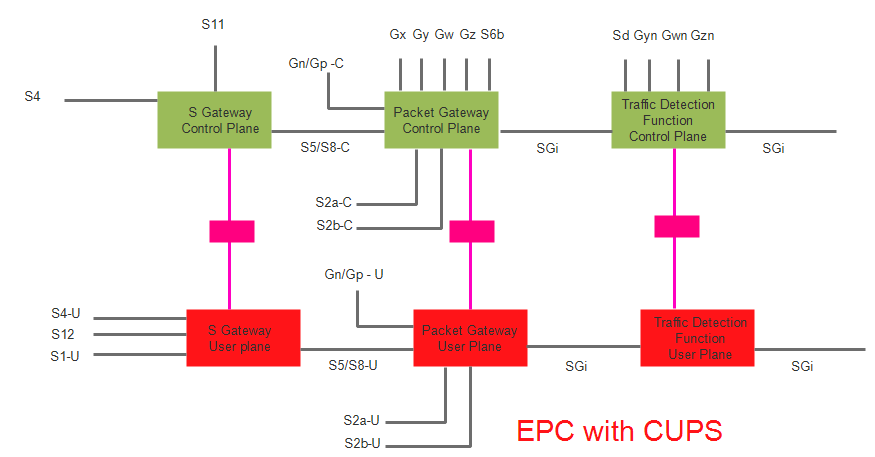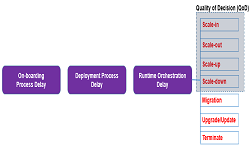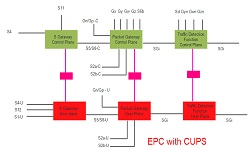5G Core (5GC) Characteristics
3GPP defines that 5G Core Network to have a decomposed network architecture with the introduction of a service-based interface (SBI) using HTTP/2 as a baseline communication protocol, and control plane and user plane separation (CUPS). This decomposition, SBI, and CUPS of 5G network function software strongly favoured cloud-native container-based implementation. Even though 5G network function can be built based on the legacy generation of architecture such as virtual machine based monolithic architecture, but the real benefits in terms of agility, fast innovation, hyper scalability, elasticity, and simplified operations and lifecycle management can be achieved, only when the 5G network functions (NFs) are designed and implemented on a cloud-native container-based micro services architecture.
Control and User Plane Separation
5G Core Network inherits control and user plane separation (CUPS) architecture from 3GPP Release 14. In 4G EPC, S/PGWs are decomposed to S/PGW-C and S/PGW-U to provide an efficient scaling of services independently.

This decomposition continues to 5G and therefore User Plane Function (UPF) plays a role only on packet processing of user traffic, while all other singling processing is done by all other Control Plane Functions such as Session Management Function (SMF). The CUPS architecture in 5G Core can bring the benefit of cost-saving and scaling with making Control Plane functions (SMFs) to be centralized and User Plane Functions (UPFs) to be distributed to the edge data centers.
Stateless Architecture
3GPP standards has introduced stateless architecture for network optimization and better reliability and resiliency.
In general, a stateful network function/element must keep context information of subscriber information or transport layer association information. Hence this data must persist when the function encounters any sudden
failure. On the other hand, stateless architecture is a prevalent design pattern in modern microservice-based software architecture, which necessarily has a decoupling of the application layer and the data storage layer using external data store.
For this purpose, 3GPP defines Unstructured Data Storage Function (UDSF) in TS 21.195
Service-Based Interface
The most outstanding change in the 5G Core Control plane is induction of Service based Interface (SBI) or Service based Architecture (SBA) from traditional Point-to-Point network architecture. With this new change, except for a few interfaces such as N2 and N4, almost every interface is now defined to use unified interface, using HTTP/2 protocol.

This change made communication among NFs to be like a service mesh functions rather than serial chaining, which contributes to reduction in dependency between each interface and helps in independent scaling of each function. As a result, the agility of having new features and services across network functions is increased.
- Service based architecture is based on a set Network Functions (NFs)
- NFs provides services to other NFs Service Base Interface (SBI)
- Reference Point interface is replaced by a common bus to connect all NFs

Network Slicing
Dedicated Core (DECOR) and Evolved DECOR (eDECOR) have been already introduced in LTE/4G, Network Slicing is practically will increase rapidly in the 5G Core because of cloud-native Network architecture along with the maturity of network function virtualization (NFV) and Software Defined Network (SDN) technologies.
In 5G, network slicing is expected to allow enterprise customers to leverage “made for a particular customer or user feature” network which meets each requirement on customizable network capabilities such as speed, quality, latency, reliability, security, and services. This will be a new opportunity for the monetization of network service to Network Service Providers.
Related Post:
- NFV Management and Orchestration [MANO] key and performance indicators [KPIs]
- Network Function Virtualization (NFV)
- Virtual Network Function (VNF) Definition, Architecture and Design
- Open Stack, its components and deployment models
- Open RAN (O-RAN) Reference Architecture
- What is eCPRI, how it contributes to 5G and Open RAN?



